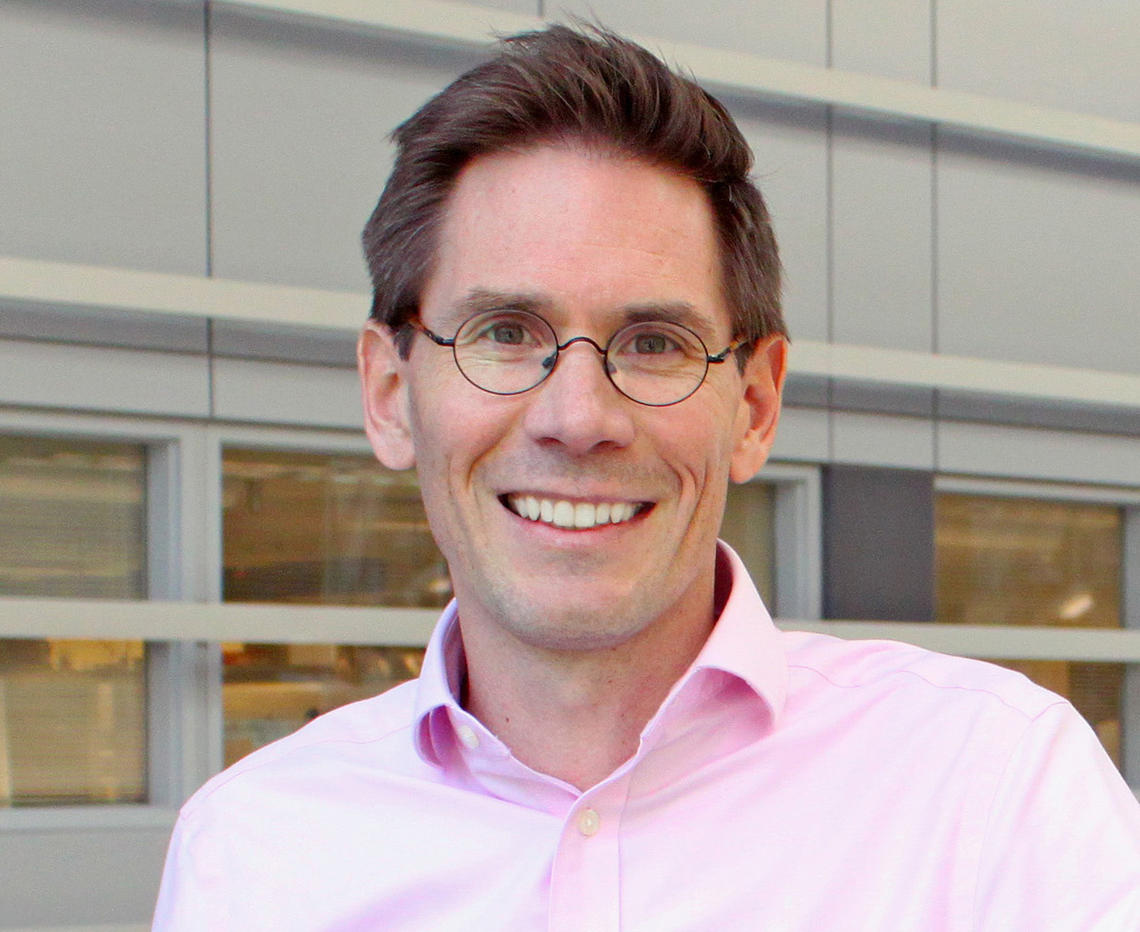April 21, 2020
Researchers find aging stem cells have a key role in hair loss

Why exactly do people go bald or see their hair thinning out as they get older? For decades, researchers studying aging and hair loss have focused on keratinocytes, the cells that make up the bulk of the hair follicle and eventually give rise to the hair fibre. But a study from the University of Calgary Faculty of Veterinary Medicine (UCVM) has found that it’s actually a small population of specialized cells within the hair follicle called fibroblasts, and the dermal stem cells that maintain them, that may cause hair loss.
In a paper published in Developmental Cell, Dr. Jeff Biernaskie, PhD, and his team, led by graduate student Wisoo Shin (pictured above), demonstrate that with increasing age, these dermal stem cells become dysfunctional and lose their ability to self-renew.
“If we ever want to prevent hair loss from happening or resurrect hair growth once you start to lose your hair, we need to focus on maintaining the function of these hair follicle dermal stem cells,” says Biernaskie, associate professor of comparative biology and experimental medicine at UCVM, and the Calgary Firefighters Burn Treatment Society Chair in Skin Regeneration and Wound Healing.
This is a really important study in highlighting how aging impacts tissue-resident stem cells and the molecular changes behind this degenerative process.
"We now have new clues as to how you might reverse that or prevent it from happening, not just in skin but in many tissues in the body.”
A primary reason for hair loss is progressive dysfunction of message-sending fibroblasts
Fibroblasts in the hair follicle are important because they send messages to the keratinocytes, telling them when to divide and ultimately orchestrating the repeating cycles of hair follicle growth that allow continuous production of new hair. But there needs to be a sufficient number of fibroblast cells available to send a strong enough signal to trigger this process to occur. A loss of dermal stem cells prevents production of new fibroblasts and so the population can’t be maintained.

Jeff Biernaskie's team discovered that hair follicle dermal stem cells may be responsible for hair loss.
Faculty of Veterinary Medicine
“Adult (or tissue-specific) stem cells reside in many different organs and play important roles in maintaining the integrity of those tissues,” says Shin, the lead author of the paper and an Alberta Innovates MD PhD scholar. “Each adult stem cell population acts a little bit differently in the body and, as a result, how they change due to aging is also different. We found that with the hair follicle dermal stem cells, not only are the numbers declining, but their ability to acquire certain functions is also impaired.”
Hair loss findings could also help skin regeneration and wound-healing research
As well as helping shift the direction of research into hair loss, the findings have wider implications for understanding healthy aging, skin regeneration, and wound healing.
Shin compared fibroblasts from different aged animals — young, middle-aged and older — to understand which particular genes are changing with advanced age and how they might contribute to the cell dysfunction. “There is good evidence that similar fibroblasts, or progenitor cells, reside in most organs in the body and so they may undergo similar age-related degeneration to what Wisoo has uncovered in the hair follicle,” says Biernaskie.
The study has important implications for research into how wounds heal as well. “The aged fibroblasts effectively lose their regenerative ability. Our work shows that there are specific genetic programs that allow them to continually self-renew and produce new fibroblasts that serve different functions — so maintaining those genetic programs into old age will certainly improve skin health and perhaps enhance their ability to effectively heal wounds,” says Biernaskie. “The goal is to find drugs that that can sustain or rejuvenate fibroblast function well into old age.”
The study was funded in part with Canadian Institutes of Health Research, the Calgary Fire Fighters Burn Treatment Society. Wisoo Shin received training awards from the Alberta Children's Hospital Research Institute, and an MD/PhD scholarship from Alberta Innovates.
Jeff Biernaskie is an associate professor in the Department of Comparative Biology and Experimental Medicine in the Faculty of Veterinary Medicine and the Calgary Firefighters Burn Treatment Society Chair in Skin Regeneration and Wound Healing. He has a joint appointment in the Cumming School of Medicine, and is a member of the Alberta Children’s Hospital Research Institute and the Hotchkiss Brain Institute.
Other authors on the paper were Dr. Nicole Rosin, Dr. Holly Sparks, Sarthak Sinha, Dr. Waleed Rahmani, Nilesh Sharma, Dr. Sepideh Abbasi, Dr. Elodie Labit, Dr. Jo Anne Stratton and Dr. Matt Workentine.


